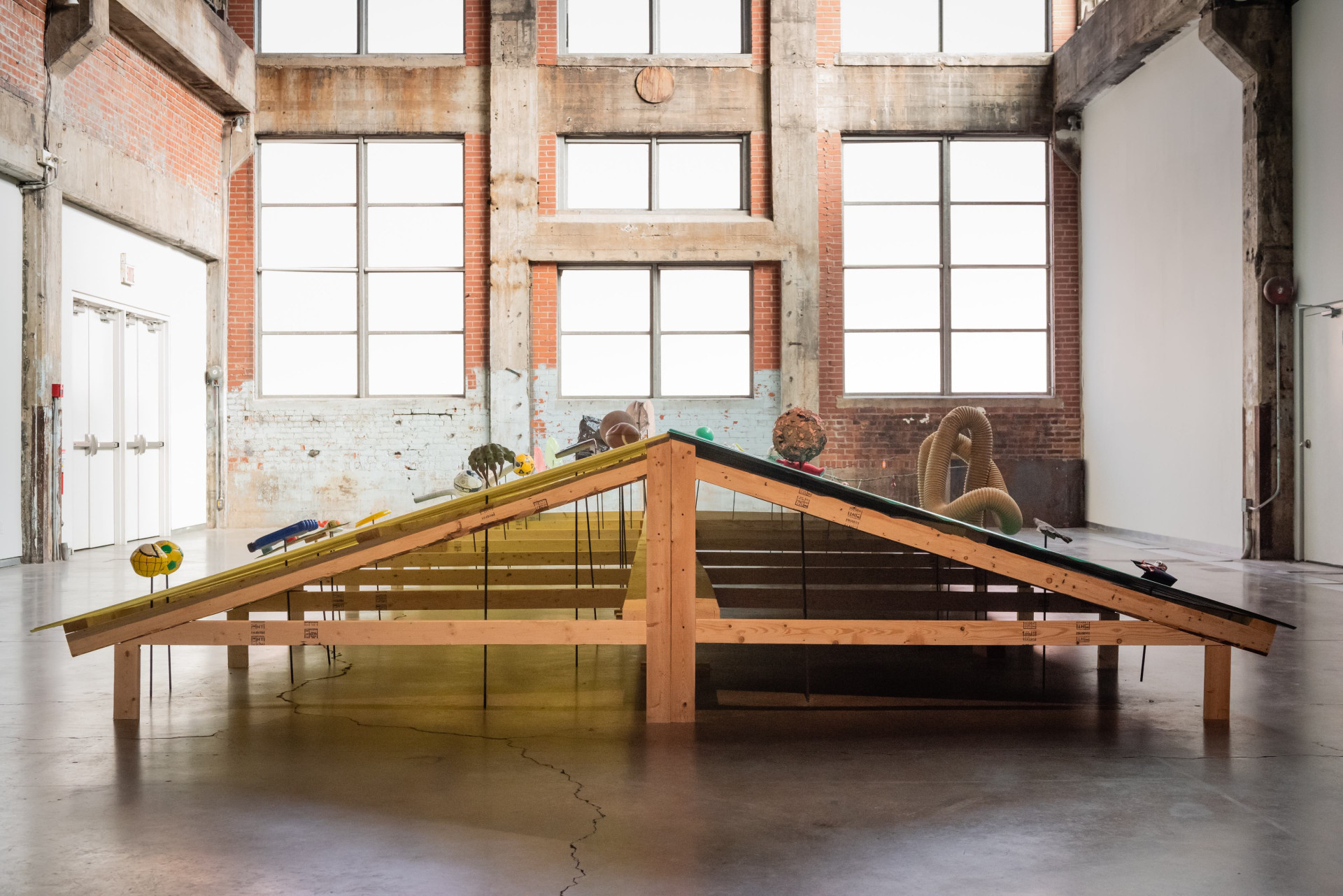
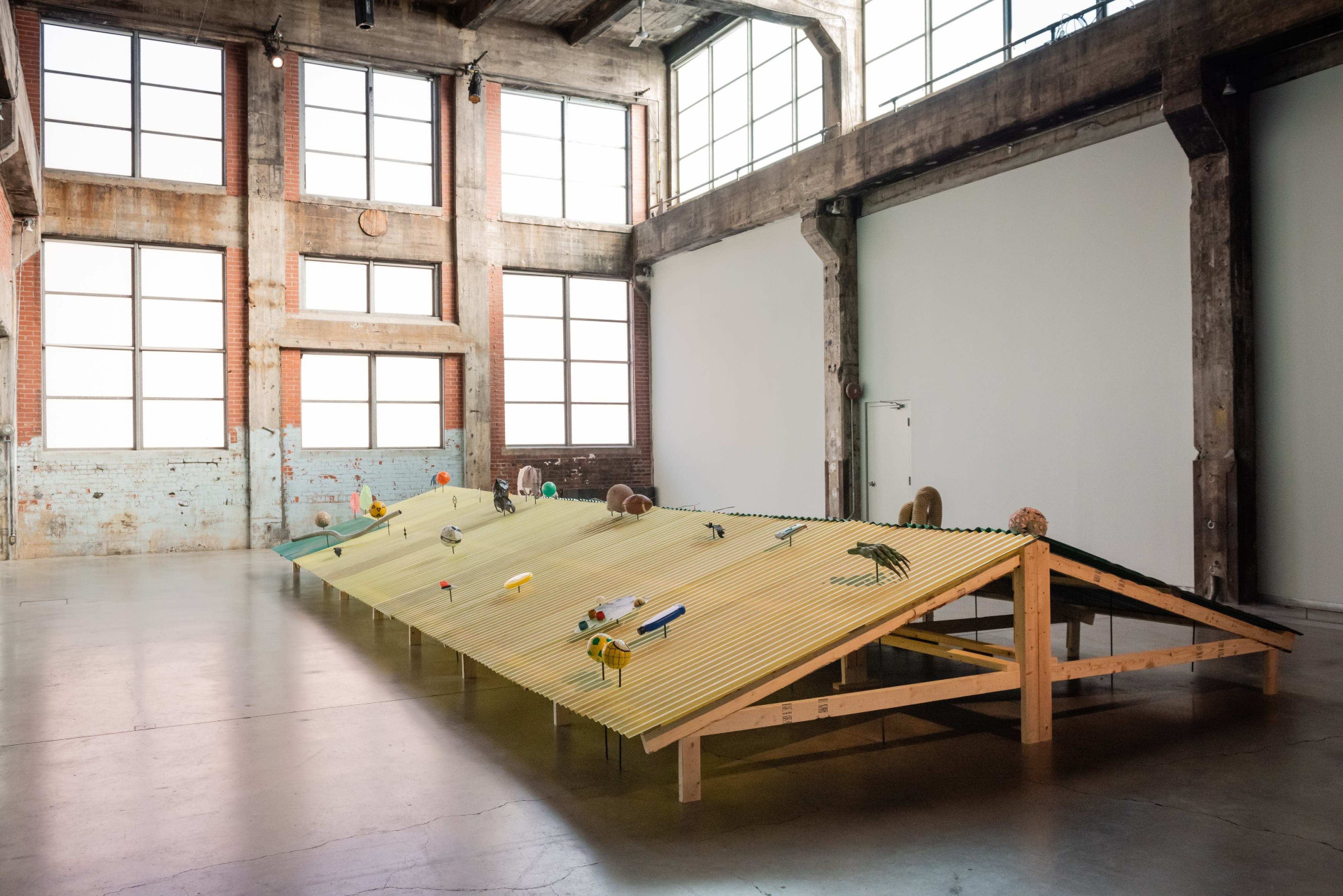
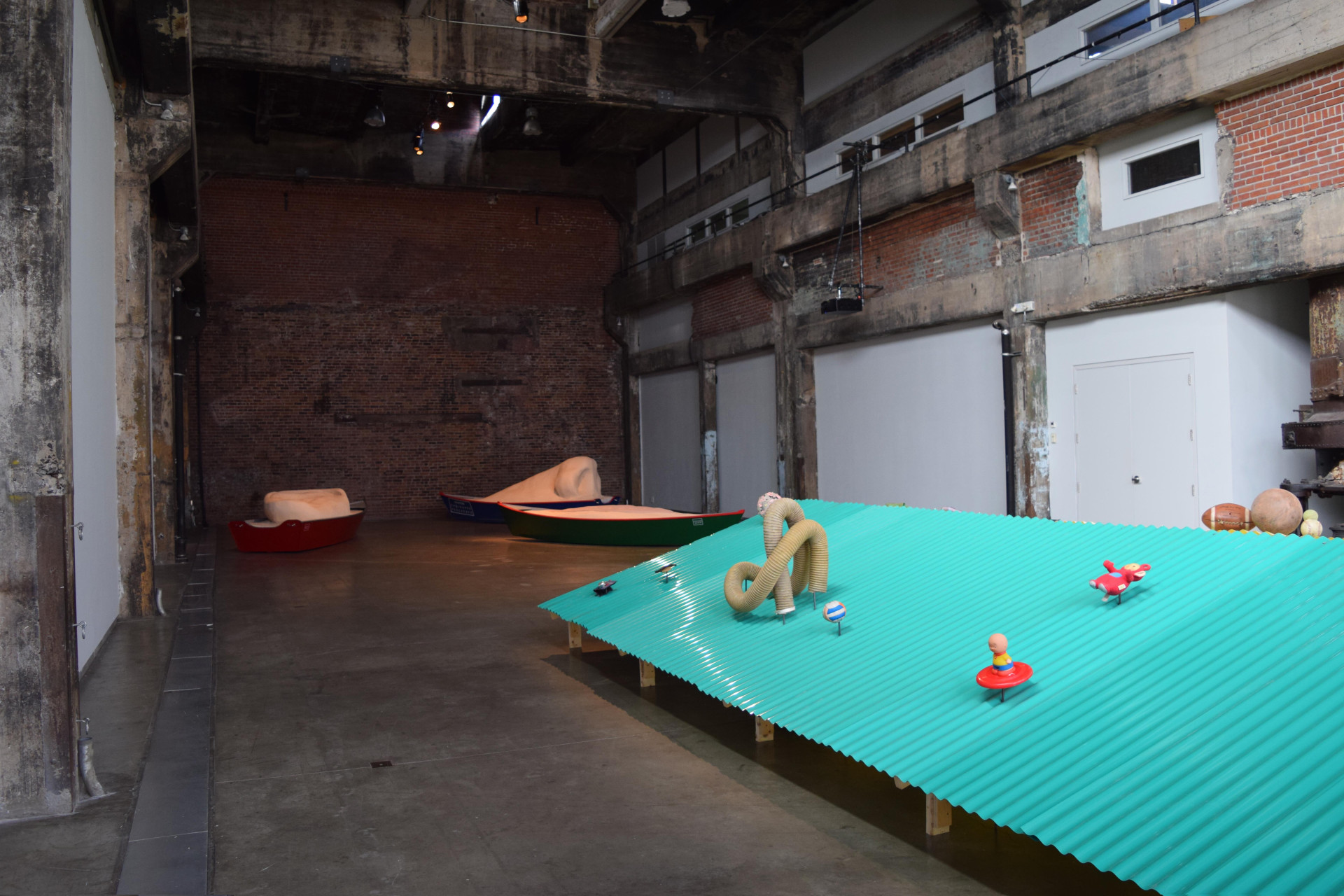
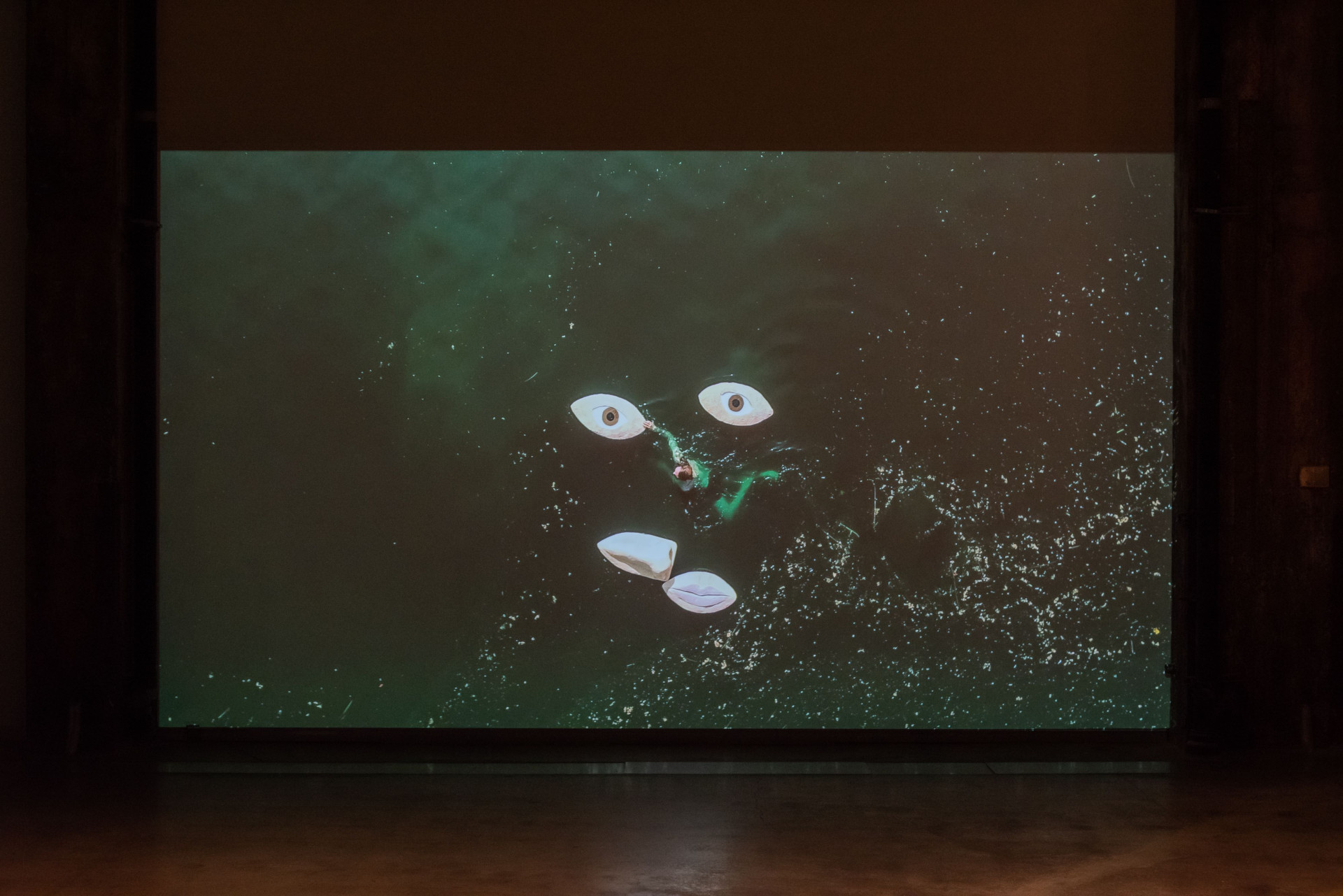
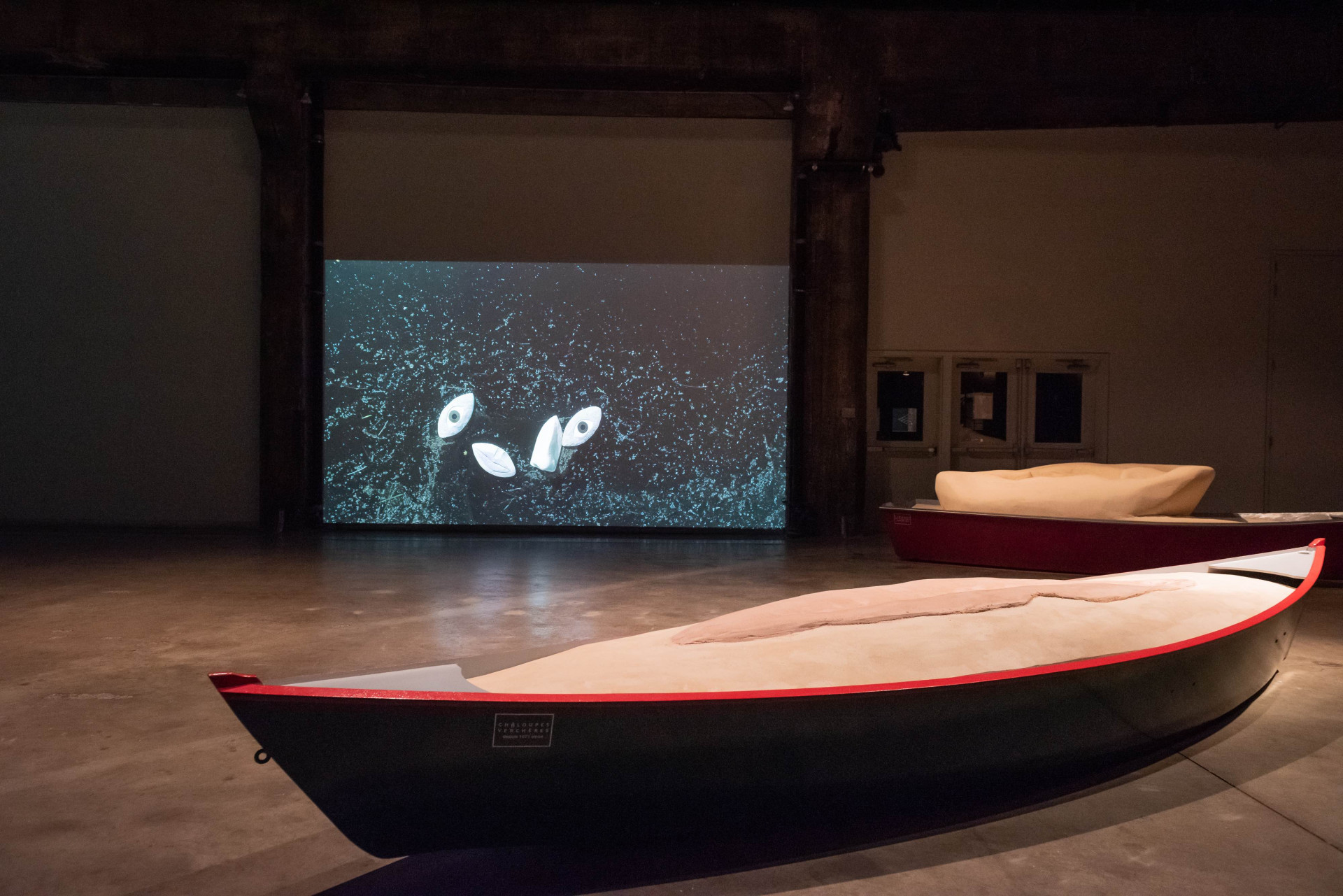
In the fall of 2019, the Darling Foundry celebrates Latin American art. To mark the ten-year anniversary of the Residency of the Americas, supported by the Conseil des arts de Montréal, the art centre is offering a special program to Montreal and Canadian audiences that showcases the work of two former residents. In the Main Hall, Chilean artist Javier González Pesce (2014 resident) presents his first solo exhibition in North America, Two Ways to Disappear Without Losing the Physical Form.
• • •
In the exhibition Two Ways to Disappear Without Losing the Physical Form, Chilean artist Javier González Pesce presents two recent bodies of work that focus on notions of disappearance and invisibility. In a new version of the installation The Island of the Un-adapted (2018/2019), recreated on the floor out of corrugated roofing sheets, the artist composes microcosms with lost objects—often stolen, abandoned, and then “found” on the rooftops of Santiago and assembled into improbable archipelagos. The second project, Untitled (Human Face) (2017/2019), uses sculpture and video to evoke different ways of representing the elements of a face on a constantly changing surface: the sea.
The dialogue created between the two works refers to Chile’s past and present reality in presenting the scattered state of goods removed from the visible world and hastily discarded and the dismemberment of bodies lost at sea. However, González Pesce is equally interested in exploring a way of working with sculpture that integrates unstable elements such as waves and ocean currents, or the slope of a corrugated roof. The physical forces thus challenge the human impulse to control and rationalize. Although carried on the perpetual tide of the world, like any other material production, González Pesce’s works trace small islands of hope, not without some dark humour: since they’ve lost their human use, the objects get a chance to have a second life of leisure on the rooftops of houses, left out in the sun and rain; as for the rowboats, they become both vehicles for the dismemberment of an anonymous face that evokes a thousand faces and the only reliable means of floating at sea and therefore, of possibly surviving.
Ji-Yoon Han
(translated from French by Oana Avasilichioaei)
• • •
The exhibition is made possible thanks to a generous sponsorship by Chaloupes Verchères, as well as the support of Conseil des Arts et des Lettres du Québec and Conseil des arts de Montréal.
Javier González Pesce
González Pesce is a visual artist and independent curator, who lives and works in Santiago, Chile. He holds a BFA in sculpture from ARCIS University (2008) and studied at Diego Portales University. He has exhibited his work mainly in Chile, China and Switzerland, and in group shows in Argentina, the US, Greece, Uruguay and Colombia. He was nominated for the Altazor Awards in the category Sculpture (2012) and won the first Price at the Young Art Contest of the Visual Arts Museum and Minera Escondida (2012). Since 2011, González Pesce co-directs the alternative exhibition space LOCAL Contemporary Art.
Curator
Ji-Yoon Han



